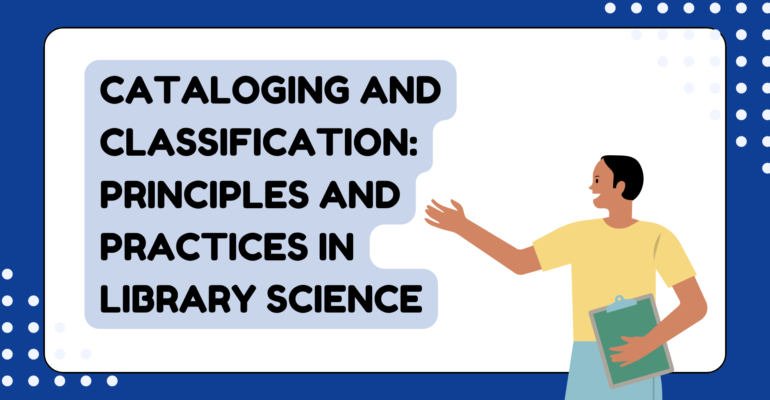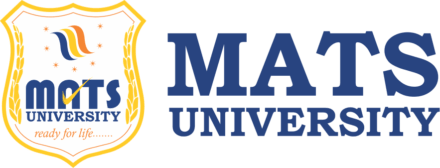Cataloging and Classification: Principles and Practices in Library Science
June 23, 2023 2023-07-05 8:28Cataloging and Classification: Principles and Practices in Library Science
Cataloging and Classification: Principles and Practices in Library Science
Introduction:
In the field of Library Science, cataloging and classification play a crucial role in organizing and retrieving information effectively. MATS University in Chhattisgarh recognizes the significance of these principles and practices, offering comprehensive education and training to aspiring library professionals. Cataloging and classification, as essential components of library science, ensure efficient retrieval and navigation of these resources. We will delve into the importance of cataloging and classification, their principles, and how MATS University, the Library Science College in Chhattisgarh equips students with the necessary skills to excel in this domain.
The Significance of Cataloging and Classification:
Cataloging involves creating descriptive records of library materials, such as books, journals, audiovisual materials, and electronic resources. These records contain essential information like title, author, subject, and call number, enabling users to locate resources efficiently. Classification, on the other hand, involves assigning systematic codes or numbers to arrange materials on shelves based on their subject content. Proper cataloging and classification ensure easy accessibility, smooth retrieval, and effective management of library collections.
Cataloging involves the creation of bibliographic records that describe and provide access points for library materials, such as books, journals, multimedia, and digital resources. Classification, while, categorizes these resources into subject areas based on their content. Effective cataloging and classification facilitate resource discovery, enabling users to locate relevant information quickly.
Curriculum Highlights:
The program at Mats University, the covers a wide range of topics, including:
1. Fundamentals of Cataloging:
Students gain a solid foundation in cataloging principles, including standardization, descriptive cataloging rules (e.g., Resource Description and Access), and controlled vocabularies (e.g., Library of Congress Subject Headings).
2. Classification Systems:
Students explore major classification schemes. They learn how to assign call numbers and create systematic arrangements for library materials.
3. Metadata and Resource Description:
With the increasing importance of digital resources, students delve into metadata creation and standards like MARC (Machine-Readable Cataloging). They understand the role of metadata in enhancing resource discovery and interoperability.
4. Cataloging Special Formats:
This module focuses on cataloging non-print materials, including audiovisual materials, electronic resources, maps, and manuscripts. Students learn the specific challenges and practices involved in cataloging these formats.
5. Cataloging Tools and Technologies:
The program introduces students to library management systems, integrated library systems, and emerging technologies in cataloging, such as linked data and semantic web applications.
Why you should opt for MATS University for pursuing Library Science

● Practical Training and Industry Collaboration:
Mats University, the Library Science College in Chhattisgarh places immense emphasis on practical learning and industry exposure. Students enrolled in the Library Science program benefit from hands-on training in cataloging workflows, cataloging tools, and library automation systems. The university’s well-equipped library serves as a hub for practical exercises and real-world cataloging projects.
Moreover, Mats University maintains strong collaborations with leading libraries and information centers, enabling students to engage in internships and gain valuable experience. These industry tie-ups also provide opportunities for guest lectures and workshops by renowned professionals, keeping students updated with the latest trends and practices in cataloging and classification.
● Faculty Expertise:
The program is guided by a team of experienced faculty members who possess extensive knowledge and practical expertise in library science. They bring a wealth of academic and industry experience, ensuring that students receive comprehensive and up-to-date instruction. The faculty not only imparts theoretical concepts but also mentors students, encouraging critical thinking and problem-solving skills in cataloging and classification.
● Career Opportunities:
Upon completing the program, graduates of Mats University’s Library Science program can pursue diverse career paths. They can work as catalogers, metadata specialists, or classification librarians in academic libraries, public libraries, research institutions, or information centers. Additionally, opportunities exist in digital libraries and information management companies. The program’s emphasis on practical training and industry collaboration equips students with the skills necessary to excel in these roles.
Conclusion:
Cataloging and classification form the backbone of library science, ensuring efficient organization and retrieval of information resources. Mats University’s Library Science program offers students a comprehensive and practical education in this field. With a well-structured curriculum, industry collaborations, and expert faculty, Mats University, the Library Science College in Chhattisgarh equips students with the knowledge and skills needed for a successful career in library science. By choosing this program, students embark on a journey that combines academic rigor, hands-on training, and industry exposure, setting them on the path to becoming proficient cataloging and classification professionals in the evolving world of libraries and information management.










